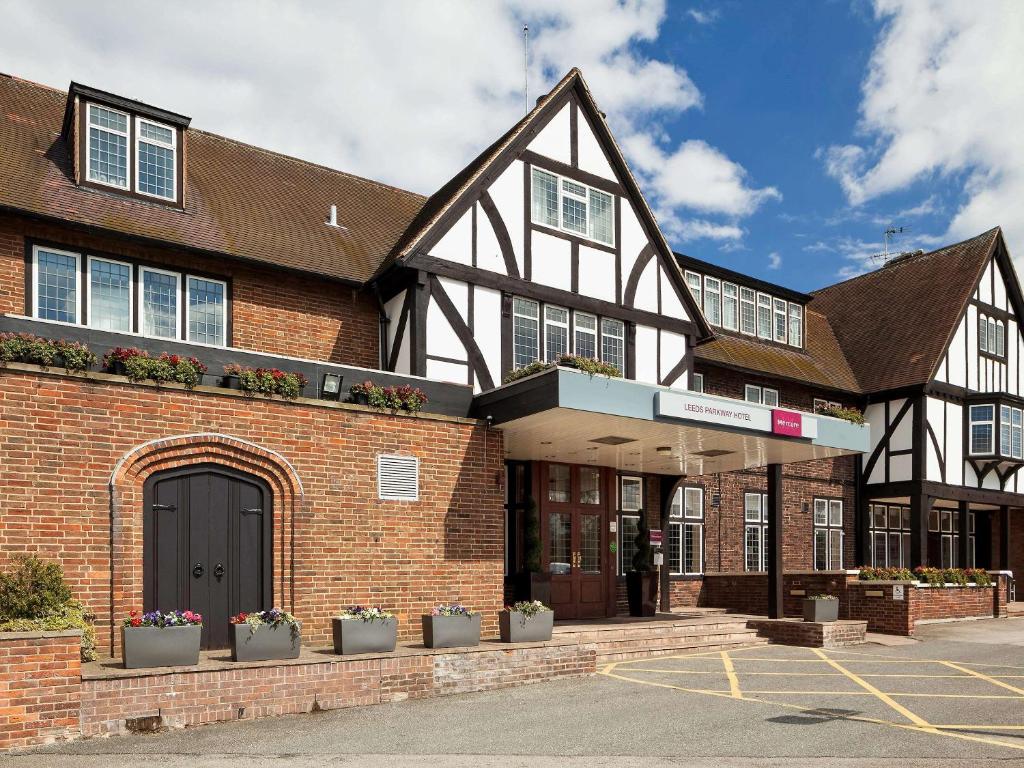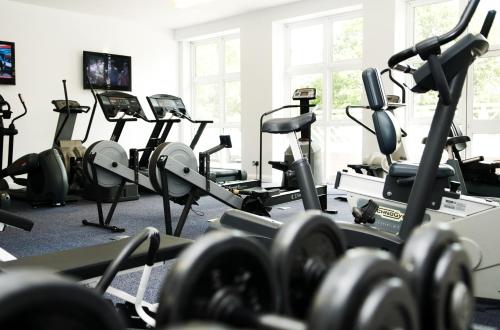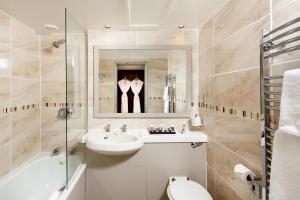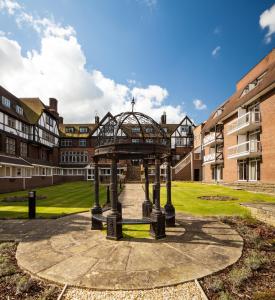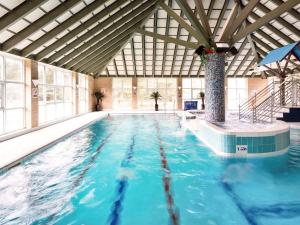Mentioned by Big 7 Travel
The 7 Most Instagrammable Spots In York


"Basically, this is the ruins of a Christian monastery that was set within a public park right on the banks of a great looking river. Built during the 12th century by monks who had forsaken their home in Barnoldswick, the ruins are still preserved, and visitors can get a slice of history by admiring them. The abbey and the grounds look very relaxing and a pleasant day out will help one unravel all this and more."
"Located just a short distance out of the city centre, Kirkstall Abbey is beautifully preserved, offering visitors an opportunity to walk through the ruins. The abbey is located beside the River Aire, making it the perfect starting point for a relaxing stroll by the water. Kirkstall Abbey | © Minda / Wikimedia"
"You can send the day with friends lying on the grass in the beautiful park that surrounds the abbey,.or join of the numerous events organised there, like “Feast & Fiesta“, on May 11th.Abbey Rd, Leeds LS5 3"

"Clifford’s Tower is one of York’s most iconic landmarks, and is largely all that remains of the eminent York Castle. Over its thousand year history, Clifford’s Tower has operated in a number of different functions, housing everything from kings to criminals, cannons to cows. Constructed by William the Conqueror in 1086, the first Clifford’s Tower was a wooden structure placed high on the motte that still stands today."
"Clifford’s Tower (also known as York Castle) has been at the heart of York for many centuries now. It’s endured a fair few battles and what remains of the fortified complex that once consisted of prisons, castles and law courts, is now a ruinous castle. You can climb to the top of the tower for a small fee, where you’ll see panoramic views of the Vale of York."

"Located about four miles west of Leeds in Aire Valley, Abbey House Museum in Kirkstall is in a magnificent Cistercian house built in 1152. The picturesque remains include a roofless church with a narrow choir and a ruined tower, an almost completely preserved chapterhouse, as well as a refectory, kitchen, and various other buildings. The gatehouse is now part of the Abbey House Museum with its reproduction houses, shops, and workshops illustrating life in Yorkshire through the centuries."
"You wouldn’t know it from the outside, but inside Abbey House Museum you’ll find a recreated Victorian street. Explore the high street, with its traditional shops full of old artefacts, nip into the Rover Inn to see what a pub was like back in the day and even call by the undertakers for a slightly more grisly glimpse of the past. Don’t miss the Childhood Galleries where you can marvel at 19th century toys, with everything from dolls’ houses to penny slot machines."


"Like a moment frozen in time, York’s Cold War bunker takes visitors back to an era where the threat of nuclear explosions prompted the construction of this space. The partially-underground bunker is a glimpse into the recent history of the British Cold War, built in 1961 to monitor fallout. It was decommissioned in the 1990s, but remains a reminder of what it is like to live under the threat of nuclear war."


"Fountains Abbey and Studley Royal Water Garden near Richmond (or Fountains Abbey for short) is an ideal stop when visiting the Yorkshire Dales with kids. There is so much to see and do here and it has one of the best adventure playgrounds in the Yorkshire Dales. The National Trust owned estate is divided into two sections with a pleasant grass ‘corridor’ linking the two sections of the park."
"World Heritage Site Fountains Abbey is a truly special place for us. We reckon this is the most beautiful place to visit in the Yorkshire Dales!. As well as abbey ruins that are the oldest in England, there’s also the Studley Royal Water Garden, which inspired our Sing Gin branding."
"This National Trust property is a World Heritage Site and includes the evocative ruins of a medieval monastery and the delightful water gardens of Studley Royal."


"Located between Leeds and Wetherby, Bramham Park is the site of the iconic Leeds Festival which occurs every August bank holiday weekend. If you don’t hold tickets to the festival, visit during the rest of the year to explore the 18th Century manor house and its sprawling grounds."


"One of the city’s most impressive landmarks, Leeds Minster was built in 1841 on an ancient, holy Christian site. It’s a beautiful, Grade I listed building, designed by Robert Chantrell, with huge stained glass windows by a range of high profile artists, including Schwanfelder, David Evans, Thomas Wilmshirst and most recently Sally Scott. You’ll also find The Leeds Cross inside – it dates back to the 10th century, making it one of the earliest objects in the city’s history."
"One of the most remarkable constructions in Leeds, the Gothic style building was designed by the famous Robert Dennis Chantrell and got consecrated in 1841. In 2012, there was a rechristening and it became known as St. Peter’s and before that, Leeds Parish Church. Alongside the impressive look, visitors stay in awe of the Saxon cross and the vibrant mosaics right behind alter that represent 12 Apostles."
"Our Minster is beautiful inside and out, with beautiful architecture and stained-glass windows. Not only does this grade I listed building look amazing, it sounds it too, being home to the renowned Minster Choir. The church even had their own rugby league team once upon a time!"

"Highlight of the cultural year in the Yorkshire Dales is the Grassington Festival, a two-week arts extravaganza that attracts many big names in music, theatre and comedy, and also includes offbeat events like..."

"At DIG, you get to discover only the most exciting archaeological artefacts from the 2000 years of history hidden under the streets of York. Our four excavation pits are filled with Roman, Viking, Medieval and Victorian finds, so you can grab a trowel and dig up the clues that show how people lived in these times. DIG, St Saviour's Church, St Saviourgate, York YO1 8NN"

"Barley Hall is a (somewhat controversial) restored medieval townhouse and hospice dating from 1386. The building was built by the monks of Nostell Priory and was once home to the Lord Mayor of York. The house is decorated to recall the late 15th century home of William Snawsell."
"If you want to take a photo wearing a traditional medieval cape in some beautiful surroundings (as well as learn more about the relationship of science, religion and chemistry in the Middle ages in York), head to the Barley Hall, where you can do all that."
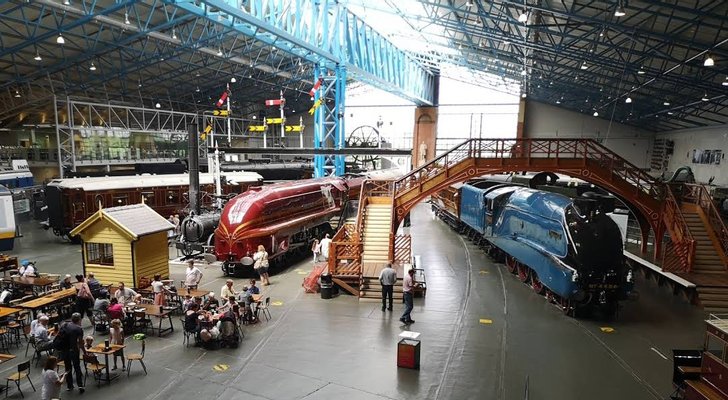
"We ended our day in York at the National Railway Museum. Despite the small size of the city, York has one of the most important railway stations on the British railway network. This might sound surprising but York plays an important role as a key railway junction approximately halfway between London and Edinburgh."
"This part of the UK often conjures up thoughts of the great age of the railway. York’s National Railway Museum does the train-era serious justice, and you’ll get some cracking old-school photos when here. View this post on Instagram"

"A 20th century Art Deco building is the quintessential location to house an art space; high ceilings and streaming light make for the perfect exhibiting set-up. Formerly the Tetley Ale headquarters and now a protected heritage building, The Tetley opened its newly-renovated doors in late 2013. The venue is curated by Project Space Leeds, a charity which facilitates the space to couple the appreciation of the contemporary arts with learning."
"The 1930’s art deco, former headquarters of Tetley Brewery is a pioneering centre for contemporary art. Also, a great place to kick back, enjoy a selection of cask ales, wines, spirits and soft drinks, together with a Yorkshire inspired menu showcasing the very best ingredients. Their sun trap of a beer garden is the perfect place to enjoy a pint of Tetley’s, right on the spot it was born more than 200 years ago."
"A unique experience is discovering the contemporary art offered in the former Tetley Brewery. Explore the latest collections, participate in a workshop or if that’s not your thing, enjoy a pint of Tetley’s or something to eat from their kitchen. If you choose to eat here, 100% of the profit goes to support their artistic programme."


"Just a 10 minute walk away lies the three stepped waterfalls at Aysgarth, one of the Yorkshire Dales’ most famed visitor attractions and a dramatic setting for a scene from the Hollywood movie Robin Hood Prince of Thieves. Running alongside the falls is Freeholders' Wood Local Nature Reserve, which boasts several easy paths winding through it - a great walk for all ages."
"Aysgarth Falls is one of Yorkshire’s most renowned waterfalls. Set on the fast-flowing River Ure, it’s actually a series of three cascading falls carved into the river. A tourist attraction for over 200 years, it’s been the inspiration of Wordsworth and has even been featured in a Hollywood movie – Robin Hood Prince of Thieves."







